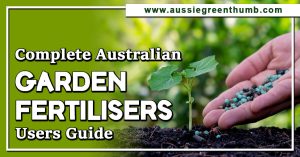Whether it's for your garden or your animals' feed program, luckily, there's no shortage of options when it comes to hay. Although, with such wide varieties and different properties, knowing which hay will work best for you can take time and effort.
Some, like Alfalfa hay, which is high in fiber and protein, and others, like timothy, which has a high appetizing factor that easily attracts animals. If you need help deciding which hay to use, read this article.
We've compiled a list of 10 types of hay that'll give you a better understanding of the purpose and use of each type of hay.
More...
How to Use Hay in Your Garden
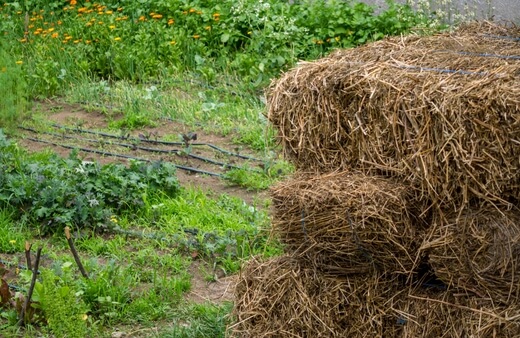
For those who are thinking of using hay for gardening purposes, mulch or compost can be of great use. Not only do they protect the soil and the roots of various plants from extreme weather, but they're also known for smothering weeds and helping the plants retain their moisture as well.
The more natural your mulch is, the less the chances are of them breaking down over time. Even though sometimes it can depend on the material, natural compost can help the soil enrich with organic materials and nutrients. This will make the soil richer and also lighter.
Besides matured compost, hay is considered the best for a garden. Similar to straws, hay is an excellent insulator and is most effective against weeds, and best of all, it breaks down fast to help enrich the soil. Alfalfa is a great example as it's a legume and it provides nitrogen to the soil.
How to Prepare Hay
Many people buy hay to control weeds in their gardens. Having bales of hay or straws in a growing garden, therefore, is a common scene to come across.
The bales will contain some grass seeds or weeds, so the next thing you need to do is soak the bales with water and let the sprouts grow a ½ inch in length before you can use them. Or, you can leave the bales all through winter, and they'll grow on their own.
Managing Weeds Using Hay

For gardens, avoid applying hay at the beginning of the gardening season. This is when the soil is cold, and since hay is an insulator, the soil will remain cold, and all the seeds you planted will germinate slowly.
What you can do instead is wait for the soil to be warm, the plants to be well placed, and the seeds to be planted at least 3-6 inches high. Next, cut the twine holding the bales and separate it into flakes. Slowly pull them apart so they open up to loose layers and set them between and around your plants.
Keep repeating this process until you've built yourself up to a layer of hay roughly 4-8 inches deep. This is enough to block any light from reaching the small weeds underneath.
Be careful that the hay doesn't touch your plants; otherwise, it'll cause them to rot or make way for pests to reach them. Pull the hay back slightly; 2-3 inches should do the trick. The hay will compress and flatten through the season as it slowly decomposes.
10 Common Types of Hay
Thanks to all the different weeds available, things can quickly become complicated and overwhelming. It helps to grasp these different types of hay better so that you can be sure about which to use and when. Let's take a look at them, shall we?
1. Alfalfa Hay
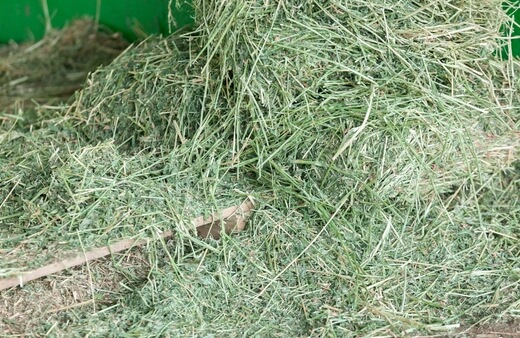
This is considered the most common type of legume hay and best suited for horses. High in protein, fiber, and calcium, Alfalfa usually has a thick stem that contains a lot of leaves.


Get Your Free Guide:
Master Growing Australian Natives eBook
A Must Have Complete Guide for Every Australian Garden
Get Your Free Guide:
Master Growing Australian Natives eBook
A Must Have Complete Guide for Every Australian Garden
As it's generally fed to horses to give them more energy and nutrition, this hay can also be great when you want your horses to gain some weight. Horses with muscle problems and underweight issues can benefit from Alfalfa hay.
Even though it's best for horses, we'd advise you to refrain from feeding it to your horses during the hot weather. Protein metabolism will create even more heat than carbohydrate or fat metabolism.
The extra heat will also cause the horse to overheat and suffer from dehydration.
2. Orchard Grass Hay
Fast growing and also being full of digestible fiber content, the Orchardgrass hay tends to have a higher protein rate than timothy hay. It also has a fine balance of phosphorus and calcium.
Orchardgrass hay is excellent for older animals or animals with digestive issues. Not only does it have a thick blade, but it's also soft. The best part? This type of hay field can be harvested three times per year.
3. Rye Grass Hay
Most of us have heard of ryegrass hay if you've grown up on a farm. It's a popular choice for most horse owners as it can be grown quickly. Additionally, it also offers great nutrition as well, which is why it's so popular.
Although it grows quickly, ryegrass hay is responsive to moisture fluctuations, which is considered a garden soil problem, so keep it in mind when planting it!
4. Timothy Hay
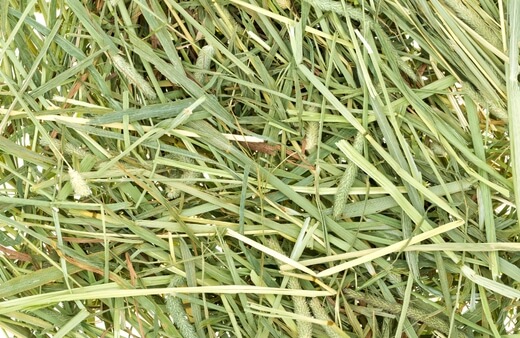
Another well known choice for feeding horses, timothy is not only palatable, but super easy to digest than some other hays. High in fiber and nutrients but low in protein and calcium, this hay has a fine texture to it unlike other grass hays.
Feeding these to horses will greatly satisfy their appetite without giving them any extra calories.
5. Brome Grass Hay
Bromegrass is safer for many as it can give you more leaves than stems. Similar to timothy hay in nutrition, which is what makes it a good choice for farmers and horse owners.
Both young and old horses can benefit from this beautiful type of hay as it's filled with extra fiber and helps give them a balanced diet.
6. Coastal Hay
Coastal hay, aka Bermuda grass, can grow in several conditions. That's probably the cheapest and most practical choice for buying hay.
It's lower in protein than the others, but that doesn't stop it from being a nice source of nutrition for many horses. Keep in mind that low-quality Bermuda has been associated with impaction colic, so it's vital you examine the hay before buying it.
7. Bluegrass Hay
Probably the most favorite choice in Kentucky; bluegrass hay is high in both nutrition and appetite. Because of its low yield, it's easily the most popular option for many animals to graze upon rather than cutting it as just hay.
Bluegrass can survive winter conditions but is the complete opposite during the summer. They make great forage for most animals and are capable of growing in a wide range of climates as well.
8. Oat Hay
Finally, our last choice is Oat hay. Containing thicker and tougher stalks, the oat hay is cut between the milk and soft dough process of the oat cycle. Overall, we'd say it's appealing to animals, but horses, however, are not a fan of the thick stalks.
Although oat hay is high in nutrients and proteins, it can be on the sweeter side, and this can cause problems in horses who are insulin resistant.
9. Clover Hay
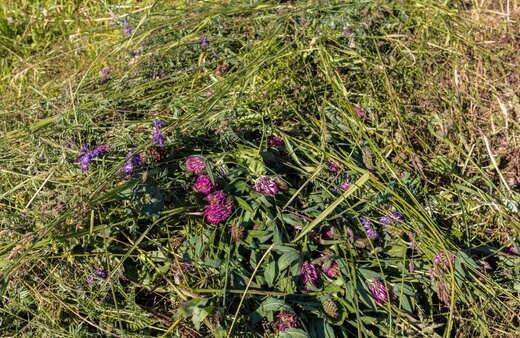
Clover is another kind of legume hay that's also used to feed horses, only it isn't as popular as Alfalfa. Thanks to its high moisture count, clover hay can be hard to bale and dry.
The hay can come in different colors such as white, crimson, red, landino and alike, even so it's typically mixed with grass hay. The clover is also high in fiber, calcium and protein, which is why it's another alternative for feeding horses.
Just keep in mind that they tend to mold quickly and can sometimes cause extra slobber in certain horses. Keep an eye out for pests as well and make sure you stay on top of it too!
10. Fescue Hay
Low maintenance and can grow in most weather conditions, fescue hay is the top most produced hay in the United States.
They grow broad and tall, are quite low on sugar and are appetizing as well. Making it another great choice for animals to feed on. But, pregnant animals shouldn't be given fescue hay because they contain an endophyte fungal infection which are known to be harmful.
If you feed your horse or other animals fescue hay, make sure to get it tested for fungal infection first before buying it.
Wrapping Up Our Guide on Types of Hay
In conclusion, hay is a crucial part of an animal's diet and soil. They help keep animals healthy and people happy. By now, you're aware of the different kinds of hay, each with its own nutritional benefits. We're positive you'll know which type will be best for you.
Let us know in the comments what other types of hays you've come across and how different they are from the others. Till then, stay safe!
Published on December 5, 2022 by Gary Clarke
Last Updated on January 23, 2025


